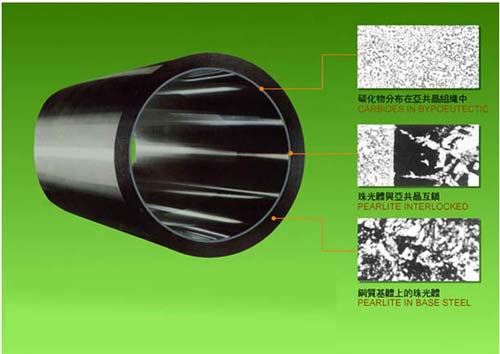Copyright © Shanghai Omega Machinery Co., Ltd. All rights reserved.
Great Features and Benefits of Bimetallic Barrel
Mar 16,2017
In today’s processing, the bimetallic barrels are widely used in the processing of modern plastics. In the plastification process, it requires the modern machine to create the most out of wear resistant system along with fibers and fillers. During the manufacturing process, the bimetallic barrel begins with a steel tube that is highly filled with the powdered metal and sealed the both ends.
After that, you just heated in a furnace at high temperature, which melts the powdered metal and then evenly distributed by centrifuging. Once you complete this process, you just cool the barrel under the specific controlled conditions and then get ready for upcoming processing. Here, the bimetallic is a protective layer and the barrel has been developed via a high quality control.
Moreover, the construction of bimetallic barrel offers a protective surface to the major strength of backing materials. The advantages of bimetallic barrel construction are providing the optimum process performance as well as increased the wear life. The main characteristics of bimetallic barrel can allow the process for continuous detection such as precise control, condition changes, similarity of barrel zone temperatures and the immediate response to heat as well as cool commands. This barrel construction process also reduces the wear gap and extends the productivity life as well. This bimetallic barrel has included the following features and benefits that include:
Features:
1. High performance backing material
2. Effective engineered design
3. Inseparable inlay bond
4. Bimetal construction
5. Extraordinary corrosion resistance
6. Wear and abrasion resistance on harsh layer
7. Hardness layer reaches around 1.5mm thickness
8. Outstanding wear or corrosion resistance
9. Toughness does not decrease with depth or under normal temperature
10. Bimetallic bore inlay
Benefits:
1. Maximize the process control
2. Efficient energy transfer
3. Increased barrel and screw life
4. Strengthen the resistance to fatigue
5. Optimum process performance
- Information
- What causes the uneven surface and poor gloss of the sheet during the sheet extrusion process? How can it be solved?
- Why does the cooling process for profile extrusion become unbalanced?
- What countermeasures can be taken to improve the dimensional and positional accuracy of profiles during the profile production process?
- How should profile molds be cleaned and maintained?
- What are the corresponding solutions to the phenomenon of grooves and pits on the surface of profiles?
- How should the raw materials be selected in the formula for PVC surface skin core layer microcellular foamed extruded profiles?
- How should the production process of biaxially oriented polyethylene terephthalate (BOPET) film be controlled?
- How should the longitudinal and transverse stretching be controlled when producing biaxially oriented films by the flat film method?
- How should the counter-rotating conical twin-screw extruder be operated for no-load test run?
- What are the characteristics of extrusion blow molding molds?
- Contact Us

-
Shanghai Omega Machinery Co., Ltd.
Add.: No.168 Hualian Road, Putuo District, Shanghai City
Contact: Nina
Tel.: +86-021-69921527
Mobile: +86-15021464410
Fax: +86-021-69921567
E-mail: omegajessica@163.com;965425705@qq.com
WeChat No.: 1131449532
-
